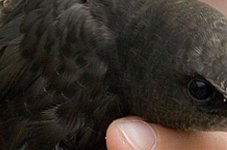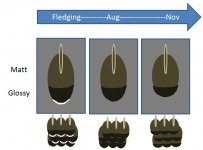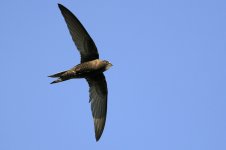For want of a skin...here is a close up of a fresh juv Common Swift in the hand -Its still got its fine white tips, glossy dark subterminal band and unglossy base (exposed in some cases)
So that is two alternative mechanisms by which the bases of the feathers could be or could appear to be paler on Common Swift
I have this afternoon been attempting to arrange a visit to the New Walk Museum in Leicester in order to photograph some skins from their vast collection...and it would be easier to arrange to see the flippin Pope...[not that i'd really want to see him]...B
I will persist however as i am intrigued...:cat:
ps...i bet if i had said that i was David Attenborough they'd have jumped about a bit quicker...:smoke:
Not really the museums fault...cutbacks to staff etc...hard times...etc
http://username-beast.blogspot.com/








